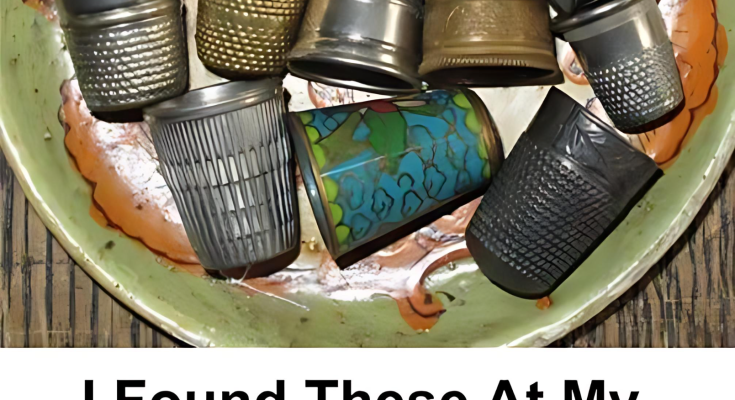Thimbles may be small enough to balance on a fingertip, but their history stretches across centuries, cultures, and continents. Born as humble finger protectors for sewing, they’ve evolved into miniature works of art, status symbols, and cherished collectibles.
The earliest known thimbles, crafted from bronze in 1st-century Pompeii, were preserved for millennia under volcanic ash—a silent reminder of how vital sewing once was to everyday life. From these ancient beginnings, thimbles stitched their way through the Middle Ages, the Renaissance, and the industrial age, changing in both form and meaning.
In medieval Europe, artisans shaped them from leather, wood, and metal. By the 14th century, Nuremberg, Germany, had become renowned for its fine brass thimbles, exporting them across the continent. Wealthy 17th-century owners took thimble-making to new heights, commissioning intricate silver and gold pieces adorned with enamel and gemstones—part tool, part treasure.
And thimbles weren’t just for sewing. Bookbinders, lace-makers, and leatherworkers all relied on them. They even found their way into pop culture—serving as a “kiss” in Peter Pan and becoming one of Monopoly’s original game tokens, a nod to their once-ubiquitous presence in homes.
Today, collectors hunt for vintage thimbles made from porcelain, bone china, and sterling silver. Museums, like Germany’s Fingerhut Museum, display thousands—ranging from simple workaday tools to elaborate ceremonial pieces. Modern artisans still craft them, blending tradition with creativity, turning them into jewelry, art, and commemorative keepsakes.
From ancient bronze relics to contemporary collectibles, the thimble’s story is one of ingenuity, craftsmanship, and enduring charm. Proof that even the smallest objects can hold the largest histories.
